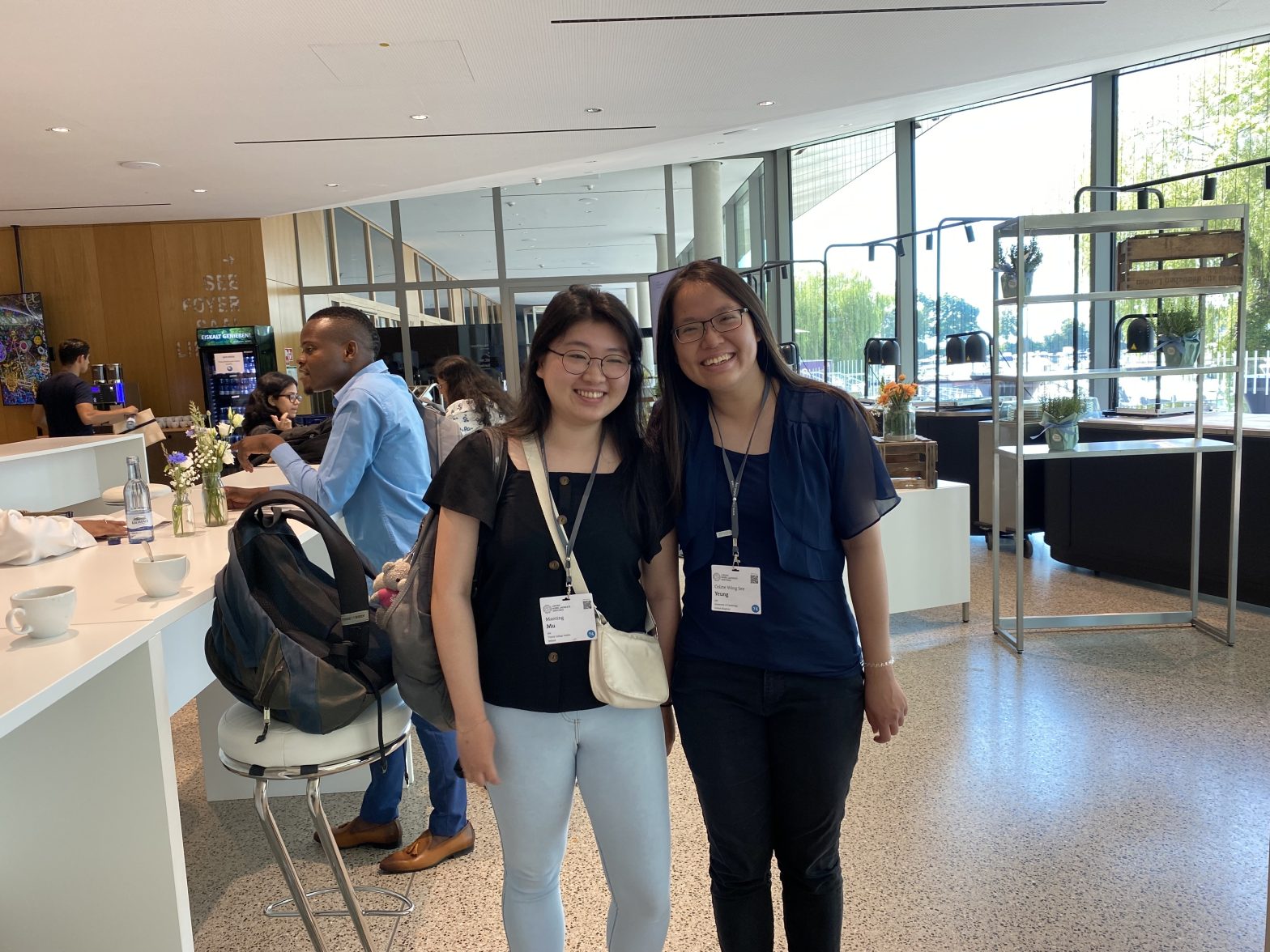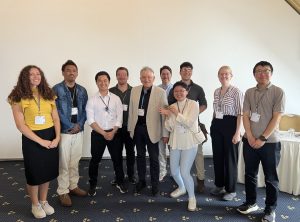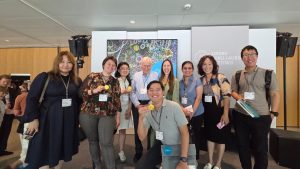I’m a final-year PhD student in Computational Chemistry at Trinity College Dublin, Ireland. My research focuses on understanding how special combinations of two metals connected by ligands, known as bimetallic complexes, can be used to activate inert carbon-hydrogen (C–H) bonds, one of the most common bonds in organic chemistry. These systems have tremendous potential for making chemical reactions more efficient and environmentally friendly, with applications ranging from pharmaceutical synthesis and agrochemicals to everyday detergents.
However, their reactivity is often complex and difficult to predict. That’s where my work comes in: using advanced computer simulations, particularly density functional theory (DFT), I explore the subtle effects that solvents, hidden interactions, and the metal environments have on their behaviour. The ultimate goal is to design better reagents and catalysts that can drive reactions more cleanly and selectively.
I really wanted the chance to meet the Nobel Laureates whose research has shaped entire scientific fields, the kind of names you see in textbooks or hear mentioned in lectures. The idea of sitting in the same room with them, chatting face to face, and hearing about their journeys in their own words was something I’d always dreamed of. The Lindau Nobel Laureate Meeting gave me exactly that opportunity. But even more than that, it brought together brilliant young scientists from all over the world, people doing amazing work in everything from quantum physics to biomedical research. It was inspiring to be surrounded by so much energy, talent, and curiosity.
Being selected to attend Lindau was an incredible honour and a moment of great pride. I was delighted to represent Ireland, Trinity College Dublin, and deeply grateful to my supervisor Prof. Max García-Melchor, who has continuously supported and encouraged me throughout my PhD journey.
My path into science was driven by curiosity and a love of the big questions, how atoms interact, how molecules behave, and how we can understand the invisible world that drives everything around us. Attending Lindau reaffirmed that passion and reminded me why I chose this path. It was a powerful moment of recognition, not just for me personally, but for the research and mentors who have shaped my journey so far.
Each day at Lindau was packed with insightful lectures, open discussions, and opportunities to engage with both Laureates and peers. The sessions were intellectually stimulating yet refreshingly personal. Many Laureates shared their career stories, including setbacks, doubts, and unexpected detours, which made their scientific success feel much more human and relatable.
A recurring theme throughout the week was the role of science in tackling global challenges, especially climate change. CO2 capture and sustainability were discussed in depth, highlighting the urgency of developing innovative solutions and the responsibility researchers carry in shaping a more sustainable future.
What stood out most, though, were the life lessons that the Laureates shared, often casually, but deeply impactful. From discoveries made by chance to breakthroughs sparked by noticing something small that others overlooked, they reminded us to stay observant, open-minded, and never underestimate the value of curiosity. Being receptive to the unexpected and paying attention to detail, they said, can often make all the difference in science.
One of the joys of Lindau was how approachable and down-to-earth the Nobel Laureates were. They weren’t just there to give lectures, they genuinely wanted to speak with us, hear our perspectives, and have real conversations.
After a fascinating lecture from Prof. Klaus von Klitzing on the quantum Hall effect, I was so inspired that I made sure to attend his open exchange session. Alongside a small group of other students, we had the chance to chat with him more informally. He shared that his very first experiment as a young student was to measure the boiling point of gold, a surprisingly humble starting point for someone who would go on to win a Nobel Prize. It was a powerful reminder that we’re all standing on the shoulders of giants, and that many of the physical constants and concepts we take for granted today were once someone’s discovery.
Then came a moment none of us expected: Prof. von Klitzing brought out his actual Nobel medal and passed it around, letting each of us hold it in our own hands. He even joked, “Just don’t bite it” (to check if it’s real gold), to which we laughed and replied that maybe we could try measuring the boiling point instead! That mix of humour, humility, and deep scientific insight is something I’ll never forget.
I also met another young scientist who, like me, was just finishing their PhD. We started talking about the next steps we hoped to take in our careers, then drifted into chatting about our research, and eventually ended up swapping stories about our favourite foods. It was one of many spontaneous, honest, and memorable conversations I had throughout the week. All the young scientists I met were incredibly kind and open. A lot of them work in wet labs and were genuinely curious about computational modelling, which led to many interesting discussions and exchanges of ideas. I’m hopeful that some of these will lead to future collaborations
Another unforgettable experience was the Bavarian dinner, which brought a completely different kind of energy to the week. Everyone arrived dressed in traditional clothes, which immediately set the tone for a fun and festive night. There was live music and a traditional Bavarian dance that involved some creative moves on benches! What made it even more special was how everyone joined in, regardless of where they were from or how familiar they were with the steps, even two of the Nobel Laureates jumped up to dance with us. It was such a joyful and light-hearted moment that brought everyone together. We weren’t just scientists, we were a community, sharing laughter, culture, and a few slightly wobbly dance moves.
At another session led by Prof. Avram Hershko, who is well-known for his work on protein degradation, instead of diving into a technical lecture, he chose to share his life lessons and reflections. The session moderator added a playful twist, encouraging us to ask questions by offering chocolate “Nobel medals” as prizes. Naturally, I couldn’t resist. I asked a question, earned one of the medals, and brought it back to proudly display on the shelf in our office at Trinity!
Another highlight was getting the chance to walk and talk with Prof. Michael Levitt, who developed the QM/MM model, an approach that combines different computational methods in a way that lets each one do what it does best. I’ve used this method in my own research, so meeting him in person was a real privilege. As we walked through the beautiful landscape of Lindau, we chatted about modelling techniques and research challenges. It felt both relaxed and inspiring, one of those rare moments where deep scientific discussion blends effortlessly with the calm of nature.
And perhaps the most memorable moment of all was the boat trip to Mainau. Surrounded by new friends, floating across Lake Constance on a sunny day, heading toward the closing ceremony, it was the perfect ending to a week full of science, laughter, inspiration, and connection.


